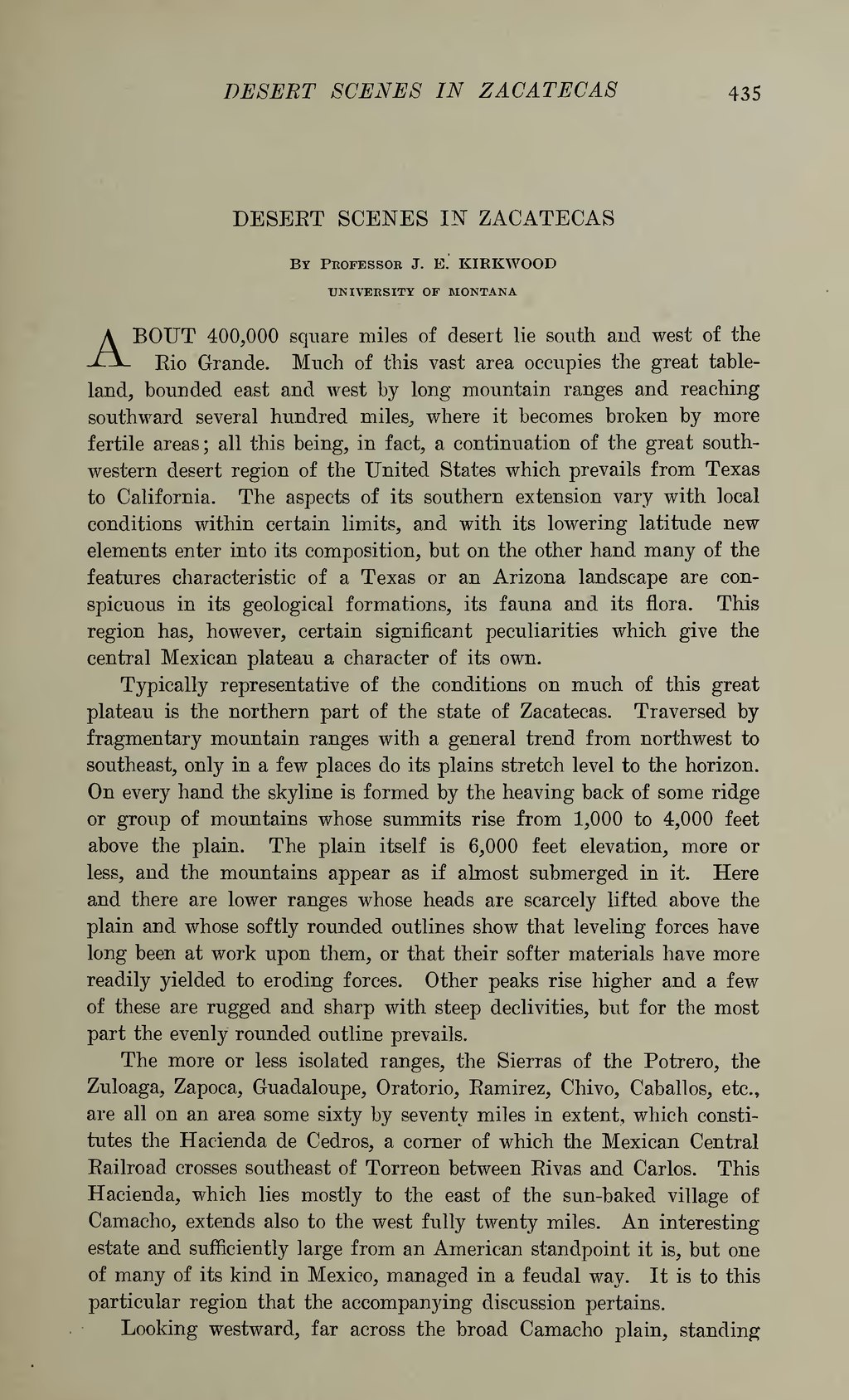| DESERT SCENES IN ZACATECAS |
By Professor J. E. KIRKWOOD
UNIVERSITY OF MONTANA
ABOUT 400,000 square miles of desert lie south and west of the Rio Grande. Much of this vast area occupies the great tableland, bounded east and west by long mountain ranges and reaching southward several hundred miles, where it becomes broken by more fertile areas; all this being, in fact, a continuation of the great southwestern desert region of the United States which prevails from Texas to California. The aspects of its southern extension vary with local conditions within certain limits, and with its lowering latitude new elements enter into its composition, but on the other hand many of the features characteristic of a Texas or an Arizona landscape are conspicuous in its geological formations, its fauna and its flora. This region has, however, certain significant peculiarities which give the central Mexican plateau a character of its own.
Typically representative of the conditions on much of this great plateau is the northern part of the state of Zacatecas. Traversed by fragmentary mountain ranges with a general trend from northwest to southeast, only in a few places do its plains stretch level to the horizon. On every hand the skyline is formed by the heaving back of some ridge or group of mountains whose summits rise from 1,000 to 4,000 feet above the plain. The plain itself is 6,000 feet elevation, more or less, and the mountains appear as if almost submerged in it. Here and there are lower ranges whose heads are scarcely lifted above the plain and whose softly rounded outlines show that leveling forces have long been at work upon them, or that their softer materials have more readily yielded to eroding forces. Other peaks rise higher and a few of these are rugged and sharp with steep declivities, but for the most part the evenly rounded outline prevails.
The more or less isolated ranges, the Sierras of the Potrero, the Zuloaga, Zapoca, Guadaloupe, Oratorio, Ramirez, Chivo, Caballos, etc., are all on an area some sixty by seventy miles in extent, which constitutes the Hacienda de Cedros, a corner of which the Mexican Central Railroad crosses southeast of Torreon between Rivas and Carlos. This Hacienda, which lies mostly to the east of the sun-baked village of Camacho, extends also to the west fully twenty miles. An interesting estate and sufficiently large from an American standpoint it is, but one of many of its kind in Mexico, managed in a feudal way. It is to this particular region that the accompanying discussion pertains.
Looking westward, far across the broad Camacho plain, standing
